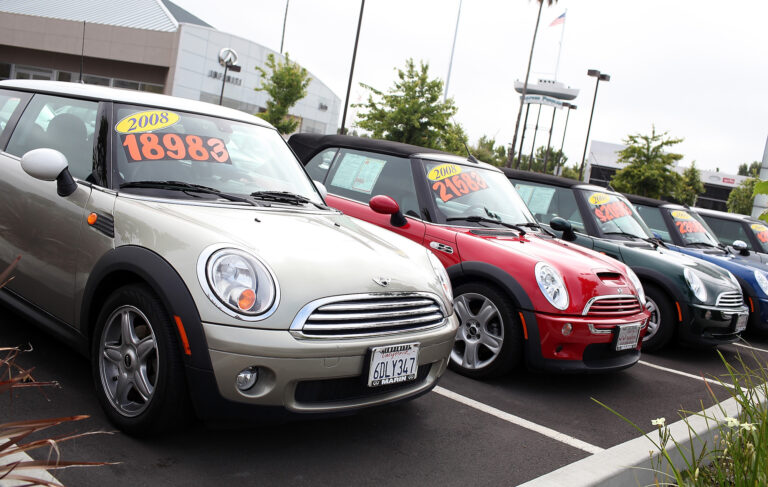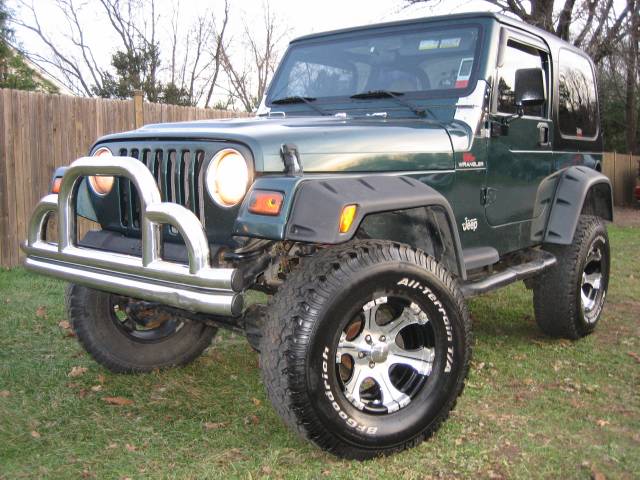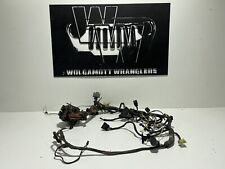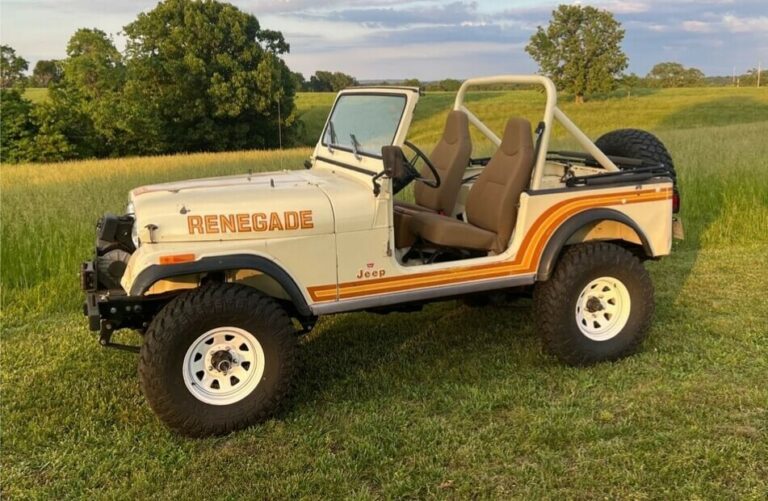1990 Jeep Wrangler 2 Door: A Deep Dive into the Iconic YJ
1990 Jeep Wrangler 2 Door: A Deep Dive into the Iconic YJ jeeps.truckstrend.com
The automotive landscape of the late 1980s and early 1990s was undergoing significant shifts, but some vehicles remained steadfast in their dedication to a particular ethos. Among them, the 1990 Jeep Wrangler 2 Door stands out as a true icon – a rugged, no-nonsense off-roader that simultaneously embraced modernity while retaining the core spirit of its legendary predecessors. Known by its factory designation, the YJ, this generation of Wrangler marked a pivotal transition for the brand, introducing a blend of updated engineering and familiar open-air adventure. For many enthusiasts, the 1990 YJ represents a sweet spot: a classic vehicle that’s still accessible, highly customizable, and unequivocally fun, embodying the raw, unadulterated essence of Jeep freedom.
This comprehensive guide will explore the various facets of the 1990 Jeep Wrangler 2 Door, from its engineering and design to its enduring appeal and practical considerations for ownership today. Whether you’re a seasoned Jeeper, a prospective buyer, or simply curious about this distinctive vehicle, prepare to delve into the world of the square-headlight Wrangler.
1990 Jeep Wrangler 2 Door: A Deep Dive into the Iconic YJ
The YJ Legacy: A Distinctive Chapter in Jeep History
The YJ generation of the Jeep Wrangler (1987-1995) was a significant departure from the CJ series it replaced. While the fundamental concept of a compact, off-road-capable vehicle remained, AMC (and later Chrysler) introduced crucial updates aimed at improving on-road manners, safety, and manufacturing efficiency. The most visually striking change, and arguably the most controversial at the time, was the shift from the traditional round headlights of the CJ to rectangular ones. This design choice became the YJ’s defining characteristic, making it instantly recognizable and somewhat polarizing among purists.
Despite the initial outcry from some traditionalists, the YJ quickly proved its mettle. The 1990 model year benefited from several years of refinement since its 1987 debut, solidifying its reputation as a robust and capable vehicle. It retained the iconic seven-slot grille, exposed door hinges, and the ability to remove doors and fold down the windshield – core elements that define the Wrangler experience. The 1990 YJ was more than just a styling exercise; it was an evolution that paved the way for the Wrangler’s continued success into the new millennium.
Performance and Powertrain: Rugged Simplicity
Under the hood, the 1990 Jeep Wrangler offered a choice of two reliable engines, both known for their durability and torque, albeit with varying levels of power and fuel efficiency.
- 2.5L AMC 150 I4 Engine: This inline-four cylinder engine, often referred to as the "Iron Duke" (though technically a different engine), produced approximately 121 horsepower and 130 lb-ft of torque. While not a powerhouse, it was incredibly dependable, easy to maintain, and surprisingly capable for light off-roading, especially when paired with the manual transmission. Its simplicity made it a favorite among DIY mechanics.
- 4.2L AMC 258 I6 Engine: The larger inline-six cylinder engine was the more popular choice, delivering around 112 horsepower but a more substantial 210 lb-ft of torque. This engine was a workhorse, providing excellent low-end grunt for crawling over obstacles and a more relaxed highway cruising experience. The 1990 model year’s 4.2L was typically carbureted, which, while simple, could present tuning challenges, especially at different altitudes or temperatures. Later YJ models would switch to fuel injection.

Both engines were typically mated to either a 5-speed manual transmission (AX-5 for the I4, AX-15 for the I6) or an optional 3-speed automatic transmission (TorqueFlite 904 or 999). The manual transmissions were robust and offered better control for off-roading, while the automatics provided ease of use.
The 1990 YJ featured Jeep’s venerable Command-Trac part-time 4×4 system (NP231 transfer case), allowing the driver to shift between 2H, 4H, and 4L. This system, combined with a solid front axle (Dana 30) and a solid rear axle (Dana 35 or optional Dana 44, usually with the I6 engine or specific packages), provided formidable off-road capability. The YJ’s leaf spring suspension on both front and rear axles offered excellent articulation for tackling uneven terrain, though it contributed to a somewhat firm ride on pavement.
Interior and Exterior Design: Form Follows Function
The 1990 Wrangler’s design was a masterclass in functional simplicity. The exterior was unmistakably Jeep, with its short wheelbase, high ground clearance, and boxy profile. Key features included:
- Removable Doors: A hallmark of the Wrangler, allowing for an immersive open-air experience.
- Fold-Down Windshield: Perfect for trail visibility or simply feeling the wind in your face.
- Soft Top and Hard Top Options: Providing versatility for different weather conditions. The soft top was lightweight and could be folded back, while the optional hard top offered better security and insulation.
- Square Headlights: The most distinctive and defining feature of the YJ, setting it apart from all other Wrangler generations.
Inside, the 1990 YJ was utilitarian and durable. The dashboard was straightforward, featuring clear gauges and simple controls. Materials were designed to withstand the elements, often consisting of hard plastics and vinyl or basic cloth upholstery that could be easily cleaned after a muddy adventure. While not luxurious, the interior prioritized functionality and ruggedness, offering just enough comfort for its intended purpose. The rear seating was cramped but functional, and cargo space was minimal, emphasizing its role as a two-door adventure vehicle.
Trims and Options: Tailoring Your YJ
For the 1990 model year, Jeep offered several trim levels, allowing buyers to choose a Wrangler that suited their needs and budget. While the base model was quite spartan, higher trims added comfort and convenience features:
- Base (S/L): The most basic offering, featuring minimal amenities but all the core off-road capability.
- Sahara: A popular and well-appointed trim, often recognized by its unique green or khaki color, body-colored fender flares, alloy wheels, and interior upgrades like special fabric seats, padded sport bar, and perhaps a sound system. It aimed for a more "adventure-ready" look and feel.
- Islander: This trim focused on a vibrant, beach-ready aesthetic, often featuring bright exterior colors, body-colored fender flares, "Islander" graphics, unique wheels, and interior accents like specialized seat fabric.
- Laredo: The Laredo trim aimed for a more upscale appearance, typically including chrome grille, chrome bumpers, alloy wheels, fancier interior upholstery, and perhaps power steering and air conditioning.
- Renegade: While the full Renegade package with its distinct body kit was introduced later (1991), some elements or specific option groups might have been available on earlier models, offering a more aggressive look.
These trims primarily focused on cosmetic enhancements and interior comfort, with the underlying mechanical components largely similar across the board, ensuring that even a base model Wrangler was a formidable off-road machine.
Why Own a 1990 Jeep Wrangler Today? Benefits and Challenges
Owning a vintage vehicle like the 1990 YJ comes with a unique set of rewards and considerations.
Benefits:
- Unmatched Off-Road Capability: Even by modern standards, a well-maintained YJ is an incredibly capable off-roader, especially with minor modifications.
- Simple Mechanics: The engines and systems are relatively straightforward, making them approachable for DIY repairs and maintenance.
- Vast Aftermarket Support: The YJ has a massive aftermarket industry, offering everything from lift kits and heavy-duty axles to replacement body panels and interior upgrades.
- Strong Community: The Jeep community is vibrant and supportive, offering a wealth of knowledge and camaraderie.
- Classic Appeal: The square headlights give the YJ a distinctive, retro charm that stands out from newer vehicles.
- Open-Air Freedom: The removable top and doors provide an unparalleled driving experience.
Challenges:
- Rust: This is the biggest enemy of the YJ. Frame rust, especially around the control arm mounts and rear shackle mounts, is common. Body rust can also appear in fenders, floorboards, and the tailgate.
- Carburetor Issues (4.2L): The original carburetor on the 4.2L can be finicky. Many owners opt for an aftermarket carburetor or, more significantly, an engine swap or fuel injection conversion.
- Safety Features: Compared to modern vehicles, the 1990 YJ lacks advanced safety features like airbags, ABS, and stability control.
- On-Road Comfort: The leaf spring suspension, short wheelbase, and rudimentary interior mean a firm, often bouncy ride, especially at highway speeds.
- Fuel Economy: Neither engine is particularly fuel-efficient, especially the 4.2L.
- Parts Availability (Specifics): While many parts are readily available, some specific trim pieces or unique YJ-only components can be harder to source.
Buying and Maintaining a 1990 YJ: Practical Advice
If you’re considering purchasing a 1990 Jeep Wrangler, thorough inspection and ongoing maintenance are key to a rewarding ownership experience.
Buying Tips:
- Inspect for Rust: This is paramount. Look at the frame rails, especially where the leaf springs attach, behind the bumpers, and under the doors. Check the floorboards, body mounts, and tailgate. A little surface rust is manageable, but extensive rot is a major red flag.
- Engine Health: Listen for strange noises, check for leaks, and assess the overall condition. If it’s the 4.2L, ask about carburetor performance or if it’s been converted to fuel injection.
- Transmission and Transfer Case: Test all gears, including 4-low. Listen for grinding or slipping.
- Suspension and Steering: Check for worn bushings, loose steering components, and cracked leaf springs.
- Electrical System: Test all lights, gauges, and accessories. YJs can suffer from electrical gremlins due to age and exposure.
- Soft Top/Hard Top Condition: Assess the condition of the top, windows, and zippers. Replacements can be costly.
- Paperwork: Ensure the title is clear and matches the VIN on the vehicle.
- Professional Inspection: If possible, have a mechanic familiar with older Jeeps perform a pre-purchase inspection.
Maintenance and Ownership Tips:
- Rust Prevention: Regular washing, especially in areas with road salt, and applying rust inhibitors can extend the life of the frame and body.
- Fluid Changes: Adhere to a strict schedule for oil, transmission, transfer case, and differential fluid changes.
- Grease Zerk Fittings: Regularly grease all universal joints and steering components.
- Carburetor Tuning (4.2L): If running the stock carb, learn how to adjust it for optimal performance or consider an upgrade.
- Aftermarket Upgrades: Many owners lift their YJs, install larger tires, or upgrade axles. Plan your modifications carefully, considering how they impact ride quality and wear on other components.
- Join a Community: Online forums and local Jeep clubs are invaluable resources for advice, parts, and shared experiences.
Market Value and Collectibility
The 1990 Jeep Wrangler occupies an interesting position in the classic car market. While not as rare or valuable as some true collector’s items, its iconic status, off-road prowess, and robust aftermarket support ensure a steady demand. Well-preserved, unmolested examples are becoming increasingly sought after, especially those with minimal rust and original components. Modified YJs also hold value, particularly if the modifications are done professionally and enhance its capabilities. The "square headlight" uniqueness has shifted from being a point of contention to a badge of honor for YJ enthusiasts, contributing to its distinct appeal.
1990 Jeep Wrangler 2 Door Estimated Price Table
Please note that these are estimated values and can vary significantly based on geographic location, mileage, specific trim level, options, modifications, maintenance history, and overall condition. Prices are for a 2-door model.
| Condition Category | Estimated Price Range (USD) | Key Characteristics |
| Description




